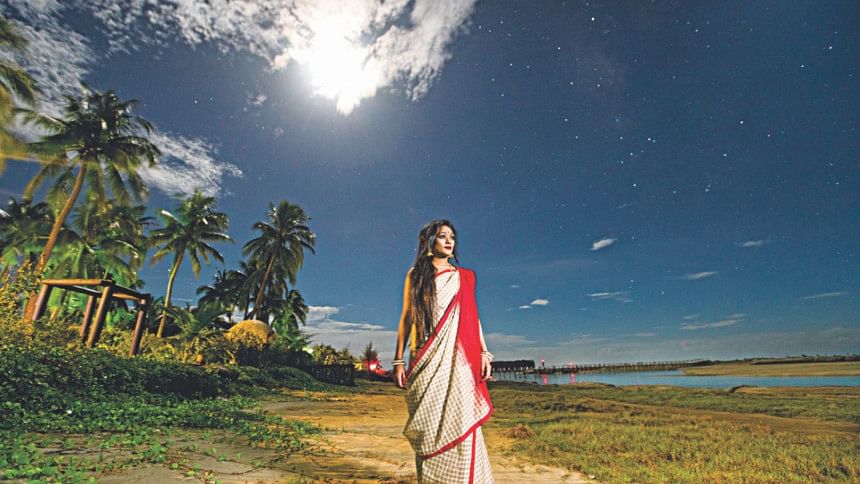The deity's nine avatars

Durga, the goddess who symbolises shakti, or power, is worshipped in this season as she visits the mortal plane to bless her followers. Yet, this is not her only form. From the legends and words of scholars, we find there are nine avatars of Durga, better known as Navadurga. These nine avatars are worshipped over the nine nights of the Durga Puja (aptly named Navaratri) mainly in various regions of India.
SHAILAPUTRI
Durga Puja begins with the worship and celebration in honour of Durga's avatar Shailaputri, whose name identifies her as the daughter of the King of the Mountains (Himalaya). She is the personification of the powers of Brahma, Vishnu, and Shiva.
She is visualised holding a trident in her left hand, and a lotus in her right, while riding Nandi, the bull. Shailaputri is, in short, the essence of earthly existence combining all that is of this Earth and within, similar to the mountains and the valleys and the atmosphere.
BRAHMACHARINI
Worshipped on the second night of the Navaratri, the name Brahmacharini, means "one who practices devout austerity." She holds a Kamandal (water utensil) in her left hand and a Jup-mala (rosary) in her right.
Brahmacharini also refers to a devoted female student who remains with her guru or teacher and other disciples. True to the meaning of her name, this form of Durga personifies love, and showcases knowledge and wisdom.
CHANDRAGHANTA
This is the third manifestation of Durga representing peace, tranquillity, and prosperity in life. Her name is derived from Chandra (half-moon) on her forehead in the shape of a ghanta (bell). Her complexion is depicted as bright golden, and she rides a lion. This particular form is ten armed and quite different from the other two forms of Durga as she blesses her devoted disciples with bravery and dispels their worldly troubles in her warrior form.
KUSHMANDA
Seen as the goddess of purifying austerity, the fourth night of Navaratri upholds Kushmanda, as she radiates the aura of the sun. Depicted as riding a tiger (or a lion in some interpretations) with eight arms bearing weapons, a jup-mala and honey, this form of Durga is seen as the 'creator of the universe'. Kushmanda holds the power to live inside the sun, while giving guidance to Surya, the Sun-God. She blesses her devotees with good health and strength.
SKANDA MATA
Literally meaning the mother of Skanda (or Kartikeya the war God), the fifth form of Durga is Skanda Mata. Legends say that she was chosen by the gods as their commander-in-chief in the war against the demons. Her mount is a ferocious lion and she is depicted with her infant son. Worshippers receive the blessing of not only Skanda Mata, but of her son as well.
KATYAYANI
A fearsome form of Durga who eradicated the Mahishashura, Katyayani is known to be born as the daughter of the sage Rishi Katyayana. Worshipped on the sixth night of Navaratri, this primordial form of Durga is seen as the beholder of Shakti as she rides a magnificent lion.
KALARATRI
The fiercest form of Durga, Kalaratri has a dark black complexion and she rides on a donkey. She signifies all-encompassing death and destruction as a force of nature. While she is a fearsome form, her devotees have her blessing in dispelling their internal darkness and remove their fears as she is worshipped on the seventh night of Navaratri.
MAHAGAURI
The eighth form of Durga is named as such to refer to her luminous beauty. According to Hindu mythologies, Shailaputri (the first avatar of Durga) at the age of sixteen was extremely beautiful, and was blessed with fair complexion, thus coming to be known as Mahagauri. Like Shailaputri, she too is depicted riding a bull. Due to her fair complexion, she is compared with the conch, the moon, and the white flower of Kunda. She is dressed in white and is seen as the one who dispels sufferings.
SIDDHIDATRI
Siddhidatri is the final form of Durga, celebrated on the final night of Navaratri. Her name means 'giver of supernatural power', and it is believed she bestows blessings upon all deities and devotees of the faith as well as Gandharvas, Asuras and other Devas (Gods). Siddhidatri rides a lion, has four arms, and she carries a trident, a spinning disc, a conch shell, and a lotus.
These nine avatars of Durga, aside from the festivities, encapsulate the concept of creation, the human sufferings, life and afterwards. The inherent symbolism from all the nine forms of Durga encompass all the shakti or powers ruling this world, from earth, fire, wind, water, sun and even the planets — every power plays a key role when they are projected in the nine forms of Durga. Every year, the Durga Puja acts as a conduit in re-energising her followers and their surroundings.
By Iris Farina
Special thanks to Dr Pratima Paul-Majumder (Former Senior Researcher, Bangladesh Institute of Development Studies) for sharing insights into the Hindu belief surrounding goddess Durga.
Model: Azra Mahmood
Photo: Sazzad Ibne Sayed
Wardrobe: Tangail Saree Kutir
Jewellery: Glued Together
Make-up And Hair: Noyon Ahamed And Niloy
Styling: Sonia Yeasmin Isha
Location: Mermaid Beach Resort, Cox's Bazar

 For all latest news, follow The Daily Star's Google News channel.
For all latest news, follow The Daily Star's Google News channel. 



Comments